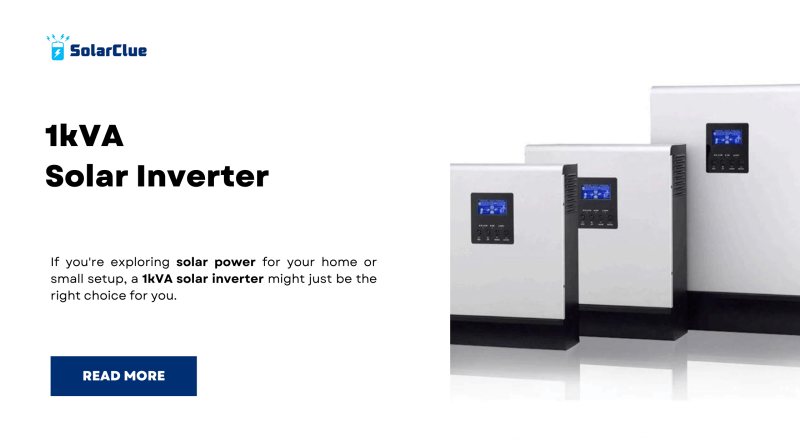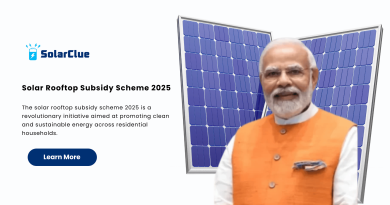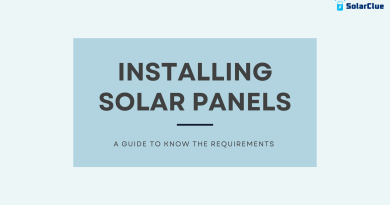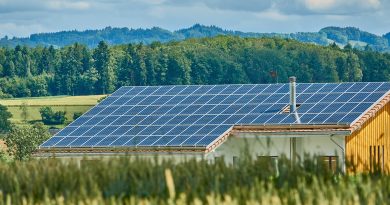1kVA Solar Inverter
With the increasing demand for sustainable energy solutions, more people are turning to solar power for their homes and small businesses. One essential component of a solar power system is the solar inverter, which converts the direct current (DC) generated by solar panels into alternating current (AC) used by household appliances. If you’re exploring solar power for your home or small setup, a 1kVA solar inverter might just be the right choice for you. In this blog post, we’ll dive deep into what a 1kVA solar inverter is, how it works, and why it could be a great fit for your needs.
Table of Contents
- 1 What is a 1kVA Solar Inverter?
- 1.1 How Does a 1kVA Solar Inverter Work?
- 1.2 1. Cost-Effective Solution
- 1.3 2. Ideal for Low Power Requirements
- 1.4 3. Environmentally Friendly
- 1.5 4. Backup Power During Outages
- 1.6 5. Easy Installation and Maintenance
- 1.7 FAQs
What is a 1kVA Solar Inverter?
A 1kVA (Kilovolt-Ampere) solar inverter is a small-capacity inverter designed to handle low-power applications. The term “1kVA” refers to its capacity to handle a maximum power load of 1000 volt-amperes, which translates to about 800 watts, depending on the system’s efficiency. This makes it suitable for small households or shops where the power demand is not very high.
This solar inverters are ideal for locations with frequent power cuts or those aiming to reduce their reliance on grid electricity. They offer an environmentally friendly way to generate electricity and, over time, can lead to significant savings on your energy bills.
How Does a 1kVA Solar Inverter Work?
The basic working of this solar inverter is similar to that of any other solar inverter. Here’s a step-by-step breakdown of the process:
- Solar Panel Generation: Solar panels capture sunlight and convert it into direct current (DC).
- Conversion to AC: The solar inverter converts this DC power into alternating current (AC), which can be used by your electrical appliances.
- Power Distribution: The converted AC power is then distributed to your home or business to power devices like fans, lights, and small electronics.
- Excess Power Storage or Grid Supply: If your system includes a battery, any extra power generated during the day can be stored for later use. Alternatively, it can be sent back to the grid in some grid-tied systems.
Benefits of a 1kVA Solar Inverter
Now that we know how it works, let’s take a look at why it might be a smart choice for your home or small business.
1. Cost-Effective Solution
A 1kVA solar inverter is typically more affordable compared to larger systems. It provides an excellent entry point for homeowners who want to switch to solar energy without making a hefty investment. Plus, with lower energy consumption, the cost of installation and maintenance is significantly reduced.
2. Ideal for Low Power Requirements
If your energy needs are limited to running lights, fans, a television, and other small appliances, a 1kVA inverter is the perfect match. It is suitable for small setups and can ensure you have power even during blackouts or when the grid goes down.
3. Environmentally Friendly
Switching to solar energy reduces your carbon footprint. With a 1kVA solar inverter, you can harness the power of the sun, significantly reducing your reliance on fossil fuels and decreasing greenhouse gas emissions.
4. Backup Power During Outages
For areas with frequent power cuts, This inverter combined with a battery can provide continuous power. This means your essential appliances can keep running even when there’s no electricity from the grid.
5. Easy Installation and Maintenance
Since it’s a small-capacity system, a 1kVA solar inverter is easy to install. The maintenance is relatively simple, and many systems come with warranties, making them a low-risk investment.
Is a 1kVA Solar Inverter Right for You?
The decision to invest in this depends largely on your power needs. If you live in a small home or operate a small business where energy consumption is minimal, this capacity might be sufficient. It’s best suited for:
- Households with low power usage
- Small offices or shops with limited appliances
- People looking for backup power during frequent outages
- Individuals wanting to start small with solar power and potentially scale up later
However, if your energy needs are higher (e.g., running large appliances like air conditioners or washing machines), a higher-capacity inverter might be more appropriate.
Understanding the Power Load of a 1kVA Solar Inverter
Let’s look at what a typical 1kVA inverter can power. Below is a table illustrating the common appliances that can be powered by a 1kVA solar inverter and their approximate energy usage:
| Appliance | Power Consumption (Watts) | Can a 1kVA Inverter Power It? |
|---|---|---|
| LED Light (10 watts) | 10 watts | Yes |
| Ceiling Fan | 70 watts | Yes |
| Laptop | 60 watts | Yes |
| Television (LCD) | 100 watts | Yes |
| Refrigerator | 200 watts | No (too high for long use) |
| Air Conditioner | 1,000 watts | No |
From this table, you can see that a 1kVA solar inverter is best suited for smaller appliances that don’t consume a lot of power.
Factors to Consider Before Buying a 1kVA Solar Inverter
When deciding on a 1kVA solar inverter, there are a few factors to consider to ensure it meets your needs:
1. Battery Compatibility
If you live in an area with frequent power outages, consider purchasing a solar inverter that’s compatible with a battery. This way, you can store excess energy and use it during times of need.
2. Solar Panel Capacity
Make sure your solar panel system can generate enough energy to power your inverter. Typically, It will need a 1-kilowatt solar panel setup for optimal performance.
3. Efficiency Rating
Look for inverters with a high efficiency rating to ensure you’re getting the most out of your solar power system. Higher efficiency means less energy is lost during the conversion from DC to AC.
4. Warranty and Support
Always check the warranty and after-sales support provided by the manufacturer. A reliable company will offer good customer service and an extended warranty for peace of mind.
Installation Process of a 1kVA Solar Inverter
Installing a 1kVA solar inverter involves several steps, typically handled by a professional technician. The process includes:
- Assessing Power Needs: The technician will determine your energy needs to confirm that a 1kVA inverter is appropriate.
- Installing Solar Panels: Solar panels are installed on the roof or a ground-mounted system where they can capture maximum sunlight.
- Inverter Setup: The 1kVA inverter is then connected to the solar panels and, if needed, to a battery storage system.
- Wiring and Configuration: The technician will wire the system to your home’s electrical grid and configure it to ensure smooth operation.
- Testing and Final Setup: Once everything is connected, the system is tested to ensure everything works properly and efficiently.
Conclusion
Investing in a 1kVA solar inverter is a smart choice for those with low to moderate power needs. It’s an environmentally friendly, cost-effective solution that can provide backup power and reduce your reliance on the traditional grid. Whether you’re powering lights, fans, or small electronics, this inverter size can offer a reliable and straightforward way to start your solar journey.
If you’re unsure whether a 1kVA solar inverter is right for you, consider your daily power consumption and consult a professional to assess your specific needs. With the right setup, you’ll enjoy cleaner, greener energy and the peace of mind that comes with energy independence.
Visit SolarClue® to see the best Solar Inverters. SolarClue® actively sells solar energy products at discounts of up to 50% on its online marketplace.
FAQs
- Can a 1kVA solar inverter run a refrigerator?
- While it can power a refrigerator for short periods, the high energy consumption of refrigerators may quickly deplete the system’s capacity. A higher-capacity inverter would be a better option for running larger appliances like refrigerators.
- How many hours can a 1kVA inverter run?
- The runtime depends on the battery capacity and the load. With a full battery and a light load (e.g., a few lights and fans), it could last several hours. Heavier loads will drain the battery faster.
- Do I need a battery with my 1kVA solar inverter?
- If you want backup power during grid outages, a battery is essential. However, in grid-tied systems where power backup is not a priority, a battery is optional.
- How much does a 1kVA solar inverter cost?
- The cost varies depending on the brand, efficiency, and whether it includes a battery. On average, you can expect to spend between $150 and $400.
- What is the lifespan of a 1kVA solar inverter?
- A well-maintained solar inverter can last anywhere from 10 to 15 years, depending on the quality of the product and environmental factors. Regular maintenance will ensure a longer lifespan.




